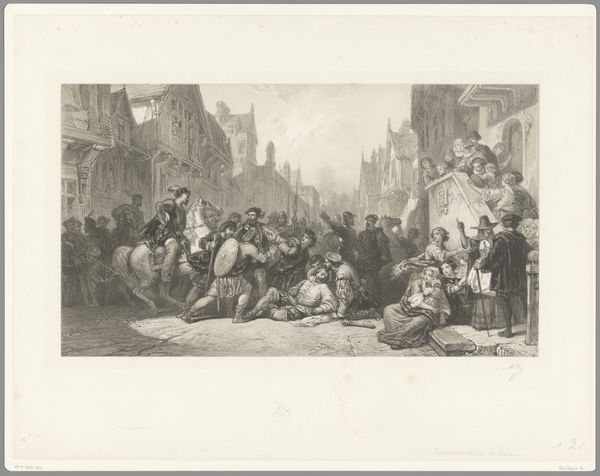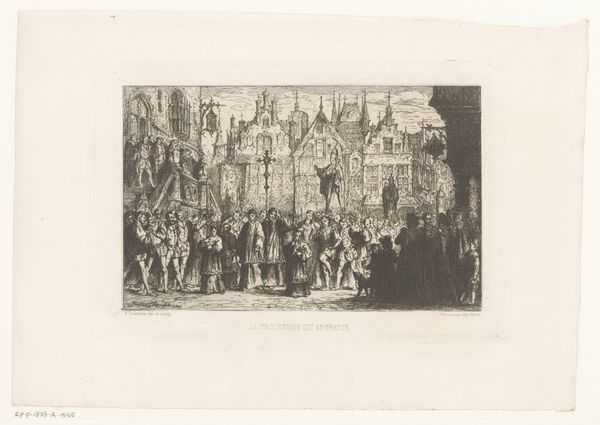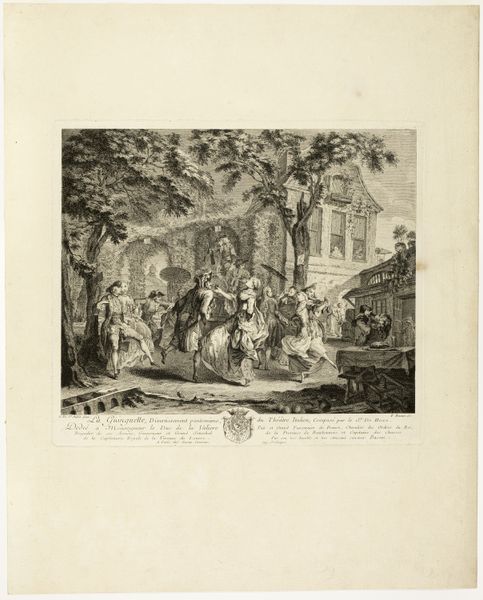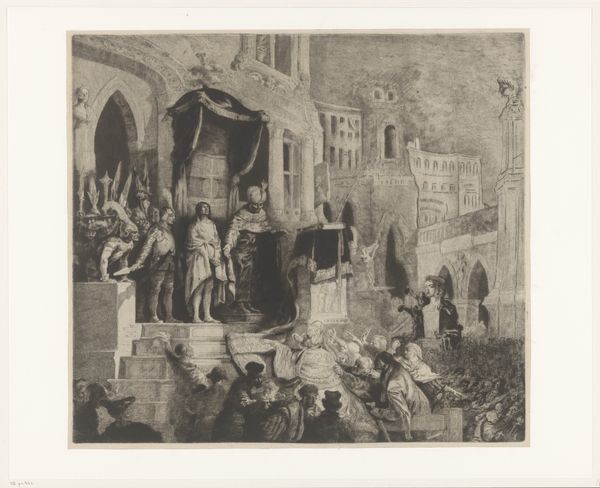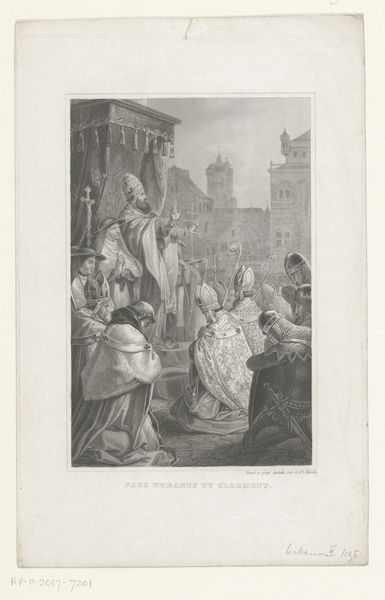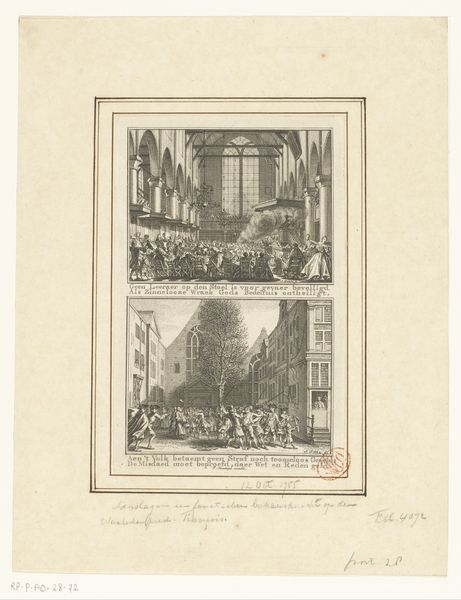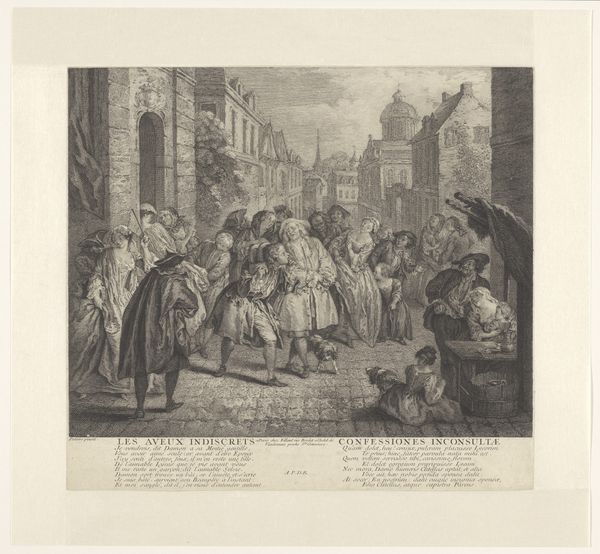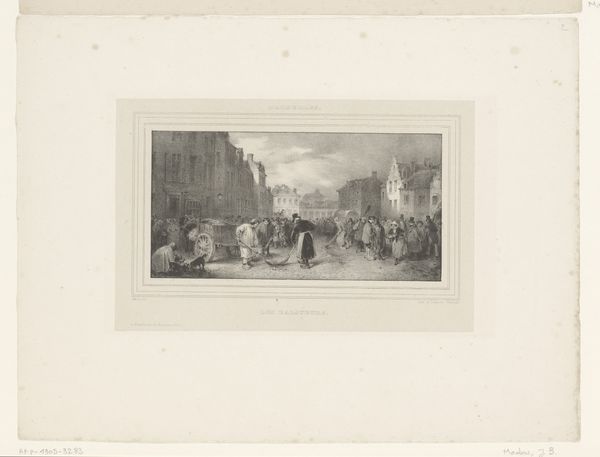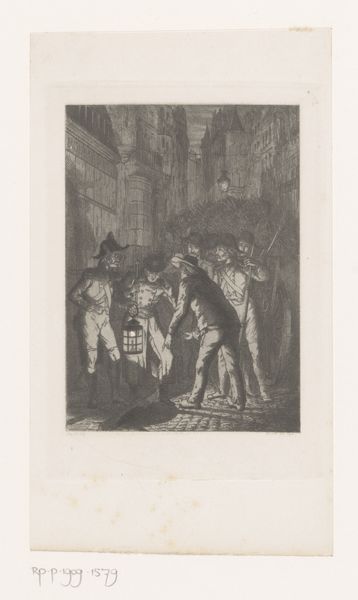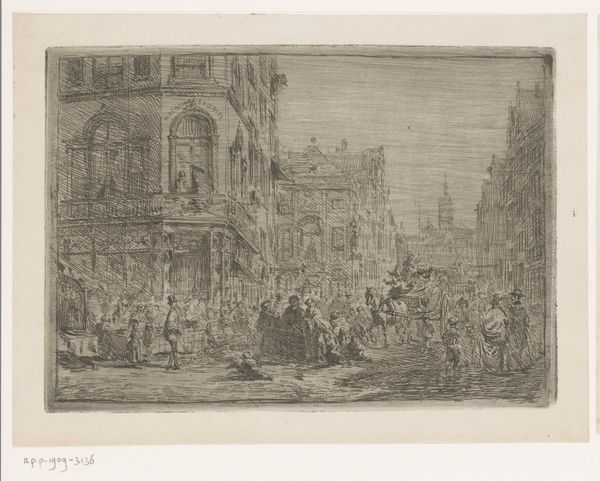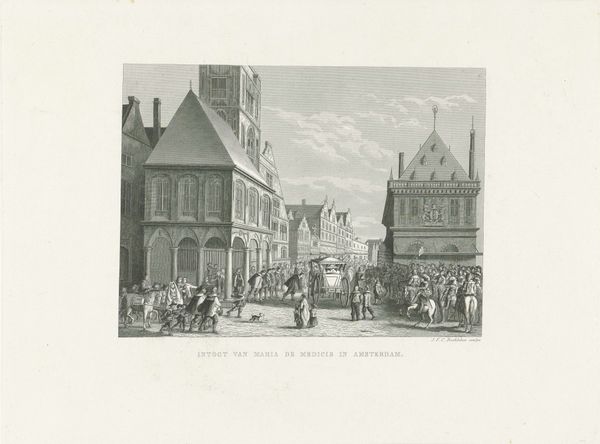
print, etching
#
narrative-art
# print
#
etching
#
figuration
#
history-painting
#
realism
Dimensions: height 280 mm, width 194 mm
Copyright: Rijks Museum: Open Domain
Wilhelm Rohr made this print of the beheading of John the Baptist sometime during his career in the second half of the nineteenth century. This event from the New Testament has been depicted by countless artists over the centuries. Rohr was working in Germany at a time when printmaking was undergoing something of a revival, making art more democratic by broadening its accessibility. In this work we see the grim aftermath of an execution. The image is made from a dark palette and captures the drama of this biblical episode while also seeming to make a comment on the callousness of state power. The beheading of John the Baptist is set against a backdrop of imposing civic architecture that seems to symbolize the might of the state. As historians, we can consult archives from the period in Germany to further consider the role of religion and politics in the production and reception of art. This artwork’s social impact is contingent on its historical and institutional context.
Comments
No comments
Be the first to comment and join the conversation on the ultimate creative platform.

